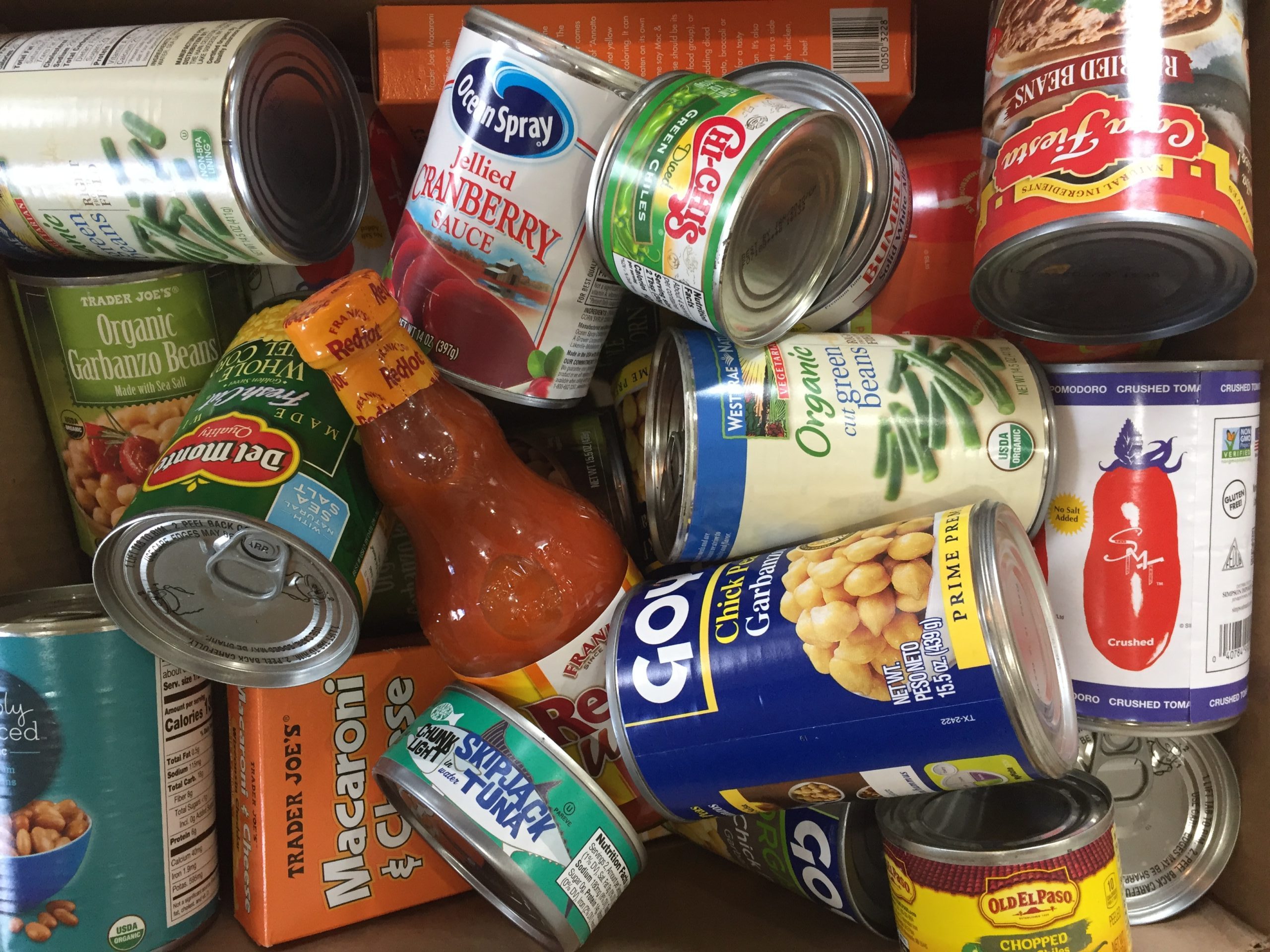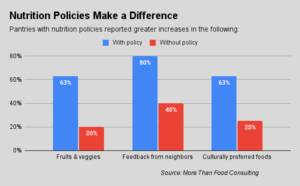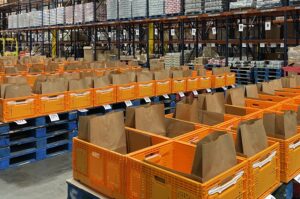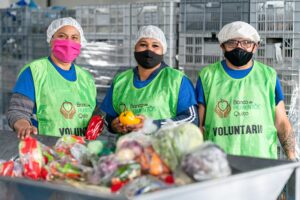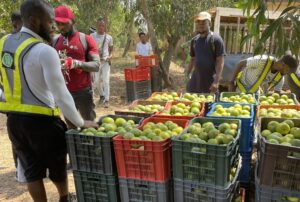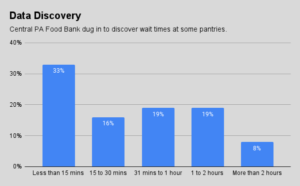As more food banks make progress in identifying the nutritional quality of the food they distribute, they are running into the same problem that Foodshare of Conn. did: big piles of mixed, donated foods that are not easily ranked.
Sometimes known as salvage, these miscellaneous items usually come from retail pick-ups and can make up a large portion of a food bank’s overall inventory. Yet the nutritional content of these jumbled items remains mostly a mystery, revealed only by painstakingly examining the individual labels of each product.
With a new nutrition policy in place and a desire to distribute greater amounts of healthier food, Foodshare wanted to improve its ability to track the nutritional quality of its salvage. It was able to do so with the help of a new device, still in pilot, that scans UPC barcodes, links the food item to a nutrition database and ranks it automatically.

“It’s a very inexpensive, fabulous little scanner,” said Katie Martin, Ph.D., Executive Director of Foodshare’s Institute for Hunger and Research Solutions.
While the scanner remains in development, Foodshare’s experiment was able to prove the feasibility of devoting time and effort to ranking salvage. Foodshare now has “data and evidence” to support undertaking a more concerted effort around improving the nutritional quality of salvage items, Martin said.
Foodshare already has a good record of distributing healthy food, with 50% of its 2018 inventory (mostly purchased food) ranked as nutritious. However, its next largest segment of inventory (31%) was salvage, and none of it was ranked.
In a test conducted in March and April 2019, Foodshare called upon volunteers, interns and expertise from its operations staff to rank more than 6,300 salvage items using the handheld barcode scanners. It found a much higher percentage of unhealthy items in its salvage pile compared to its general inventory: 37% versus 5%. In addition, 37% of items in the salvage pile were identified as less healthy, compared to only 13% in the general inventory.
In its pilot, Foodshare sorted the items into six categories: breakfast, beverages, pasta, protein & beans, soups & meals and other. Beverages represented the highest proportion of the sample (39%), while soups and meals (13% of the sample) had the least healthy profile, with 84% of them ranked as unhealthy.
With information gleaned from its pilot, Foodshare is now reaching out to some food donors to initiate conversations about donating healthier food. It hasn’t yet determined how to incorporate salvage rankings into its operations on an ongoing basis, Martin said.
While viable, ranking salvage is not a trivial matter. In the pilot, it took 28 hours to sort about 5,650 items, which is about 17 seconds an item. Foodshare found that pasta and cereal were the easiest to rank, while canned soups, proteins and bottled beverages were more difficult because of their variety.
Slowdowns happened when specific products were not in the database, requiring manual entry. Once entered, however, the new information was saved, allowing users to simply update the quantities going forward.
Food banks interested in ranking salvage items should start small, Martin advised, prioritizing certain food groups or donors. She also recommended starting with foods that come in large quantities, to make it easier to create full pallets of re-categorized items. “It’s a big endeavor, but you don’t have to do it all at once,” she said.
Trained volunteers can be helpful. “Nutrition students are terrific at this,” Martin noted. Other considerations include the need for additional warehouse space while sorting the food, as well as wifi or electrical outlets in the warehouse to support the use of the scanners and laptops. The scanning device that Foodshare used, called the WellSCAN Mini and developed by the Rudd Center at the University of Connecticut and supported by Partnership for a Healthier America, is expected to become more widely available in 2020.
Despite the extra work involved in ranking salvage items, Foodshare found the process “feasible” and beneficial in many ways. Food banks can use the information to set targets for improving the nutritional quality of their entire food inventory, help pantries source more nutritious items, and/or shift donors toward contributing more nutritious food.
“We do great work, but I think we can do better,” Martin said. “Especially with the salvage items that come in by the truckload.”
If you’ve learned something useful to your hunger relief work today, then please donate to Food Bank News. Your donation will be doubled between now and the end of the year!
